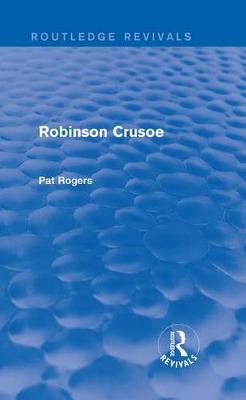Routledge Revivals
3 total works
In this concise introduction to Pope's life and work, first published in 1975, the poet's highly successful career as a man of letters is seen against the background of the Augustan age as a whole. Pat Rogers begins by examining the relationship of the eighteenth-century writer to his audience, and discusses the role of style and versification in this. The book covers the whole of Pope's work and includes not only the translations of Homer and such minor poems as The Temple of Fame, but also the prose, both drama and correspondence. Based on extensive research, this book will provide literature students with a greater appreciation and understanding of Pope's verse and the ways in which he addressed his eighteenth-century context in his work.
First published in 1979, this title presents the basic facts and the background information needed by a modern reader of Robinson Crusoe, as well as a careful exploration of the structure and style of the work itself. Pat Rogers pays particular attention to the book's composition and publishing history, the critical history surrounding it from 1719 onwards, and the contemporary context of geographical discovery, colonialism and piracy, as well as more controversial areas of interpretation. A wide-ranging and practical reissue, this study will be of value to literature students with a particular interest in the critical interpretation of Robinson Crusoe, as well as the novel's place in the context of Defoe's career.
First published in 1972, this is the first detailed study of the milieu of the eighteenth-century literary hack and its significance in Augustan literature. Although the modern term 'Grub Street' has declined into vague metaphor, for the Augustan satirists it embodied not only an actual place but an emphatic lifestyle. Pat Rogers shows that the major satirists - Pope, Swift and Fielding - built a potent fiction surrounding the real circumstances in which the scribblers lived, and the importance of this aspect of their writing. The author first locates the original Grub Street, in what is now the Barbican, and then presents a detailed topographical tour of the surrounding area. With studies of a number of key authors, as well as the modern and metaphorical development of the term 'Grub Street', this book offers comprehensive insight into the nature of Augustan literature and the social conditions and concerns that inspired it.


